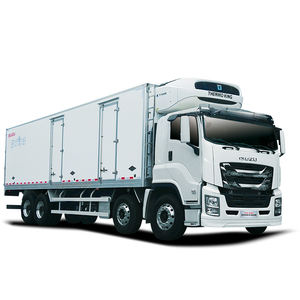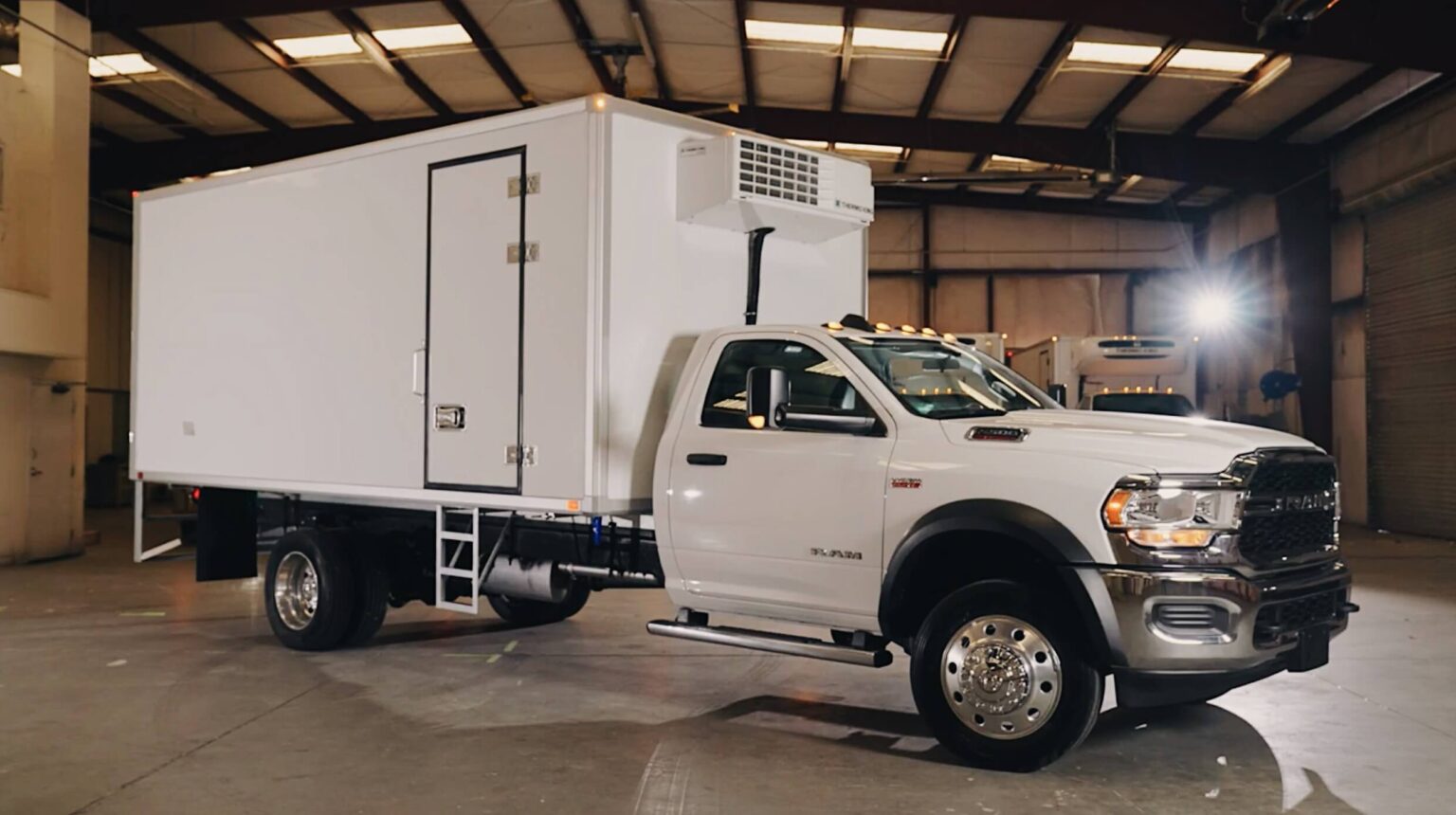Top Innovations in Transportation Refrigeration: Enhancing Effectiveness and Security
The landscape of transportation refrigeration is going through substantial transformation, driven by advancements intended at enhancing both effectiveness and safety and security. As these developments proceed to evolve, it is crucial to explore their effects on functional practices and governing conformity, motivating a closer evaluation of exactly how they improve the future of transport refrigeration.
Smart Temperature Level Keeping An Eye On Equipments
In the world of transport refrigeration, smart temperature surveillance systems have become a vital technology for making certain the integrity of temperature-sensitive products. These sophisticated systems take advantage of Net of Points (IoT) innovation to give real-time information on temperature level fluctuations, enabling operators to preserve optimum problems throughout the supply chain. By continually tracking the temperature level of chilled containers and vehicles, companies can swiftly identify deviations that may jeopardize item top quality.

Furthermore, clever monitoring systems often include automated notifies and notices, allowing stakeholders to respond promptly to any type of possible issues. This aggressive approach not only decreases the risk of wasting but also improves conformity with regulative standards controling food safety and pharmaceutical transportation.
The combination of information analytics within these systems also helps with anticipating upkeep, helping operators to visualize possible tools failures before they happen. This capacity reduces downtime and enhances functional performance, inevitably causing set you back financial savings.
Eco-Friendly Refrigerants
Smart temperature level surveillance systems play a vital function in maintaining item top quality, however the efficiency of transport refrigeration additionally rests on the choice of refrigerants made use of. As environmental problems rise, the change in the direction of environment-friendly refrigerants has actually come to be necessary. Conventional refrigerants, such as hydrofluorocarbons (HFCs), are notorious for their high Global Warming Potential (GWP), adding significantly to environment adjustment. In contrast, emerging options like hydrocarbon-based refrigerants and hydrofluoroolefins (HFOs) existing reduced GWP options, supplying both efficiency and sustainability.
These green cooling agents not just minimize environmental impact yet also align with global policies focused on phasing out damaging compounds. Their fostering can cause improved energy effectiveness, ultimately decreasing operating expense for transport refrigeration systems. Furthermore, using natural cooling agents, such as ammonia and co2, has actually gotten grip because of their outstanding thermodynamic residential properties and reduced ecological footprint.
Purchasing environment-friendly refrigerants is not merely a governing conformity step; it represents a strategic choice that improves brand name track record and promotes consumer commitment. refrigerated transportation thermo king. By prioritizing sustainable practices, business can contribute to a greener future while making certain the stability of transported items
Advanced Insulation Materials
Utilizing sophisticated insulation materials is critical for maximizing transport refrigeration systems, as they substantially boost energy efficiency and preserve regular temperature control. Traditional insulation approaches frequently fall short in protecting against thermal transfer, leading to boosted energy usage and fluctuating temperatures within refrigerated areas.
Arising materials such as vacuum shielded panels (VIPs) and aerogels provide remarkable thermal resistance, allowing for thinner accounts without endangering performance. VIPs, as an example, make use of a vacuum layer to minimize convective and conductive heat transfer, making them suitable for space-constrained applications. Aerogels, recognized for their permeable and light-weight structure, offer you can look here phenomenal insulation while considerably minimizing overall system weight.
Furthermore, integrating stage adjustment materials (PCMs) into insulation systems can better stabilize temperatures during transit. These materials take in and launch thermal energy, effectively buffering versus external temperature variations.
The integration of these innovative insulation products not only decreases the functional costs connected with power intake but likewise expands the life span of temperature-sensitive products. As the transportation refrigeration market remains to advance, the adoption of cutting-edge insulation innovations will certainly be pivotal in enhancing both efficiency and security in chilled transportation.
Automated Path Optimization
The efficiency of transportation refrigeration systems is considerably improved through automated route optimization, which leverages real-time information and advanced formulas to establish the most efficient courses for shipment. By analyzing numerous elements such as traffic patterns, weather, and distribution windows, these systems can dramatically lower traveling time and gas consumption.
Automated course optimization lessens human mistake and subjective decision-making, which can result in inefficiencies. This modern technology makes it possible for fleet managers to designate resources better, guaranteeing that refrigerated products preserve their needed temperature throughout the journey. By enhancing paths, companies can additionally boost client satisfaction with timely distributions.
Furthermore, automated systems can adapt to unforeseen circumstances, such as road closures or unexpected traffic spikes, allowing for vibrant rerouting. This flexibility not just secures the stability of temperature-sensitive items but also adds to total operational performance.
Executing automated route optimization can lead to substantial expense financial savings while minimizing the carbon footprint related to transportation. As companies progressively focus on sustainability, this technology stands out as a crucial element in contemporary transport refrigeration, aligning operational objectives with environmental responsibility. Ultimately, automated path optimization stands for a significant development in the pursuit for efficiency and safety in transport refrigeration.

Real-Time Information Analytics
Automated route optimization significantly take advantage of the assimilation of real-time information analytics, which offers vital insights right into the efficiency of transportation refrigeration systems. By making use of real-time information, transportation drivers can monitor temperature changes and devices performance, ensuring that subject to spoiling products are maintained within needed parameters throughout transportation. This positive approach not just enhances the top quality of the carried products but additionally reduces the threat of putridity and loss.

In addition to boosting effectiveness, real-time look at this website analytics enhances security by making certain conformity with regulative standards for temperature level control. This not only shields public wellness however also strengthens a business's credibility - reefer trucks thermo king. As the transport refrigeration market evolves, the assimilation of real-time data analytics becomes a foundation for driving advancement, sustainability, and operational quality
Verdict
Finally, the improvements in transportation refrigeration dramatically enhance both performance and safety within the industry. Smart Home Page temperature surveillance systems and real-time information analytics give critical oversight, while eco-friendly refrigerants and advanced insulation products add to sustainability and power efficiency. Furthermore, automated path optimization formulas not only minimize travel time however also decrease environmental effect. Collectively, these technologies stand for a crucial development in transportation refrigeration, ensuring conformity with regulatory requirements and promoting a greener future.
The landscape of transport refrigeration is undertaking substantial transformation, driven by developments aimed at improving both effectiveness and security.Smart temperature level surveillance systems play an essential duty in keeping item top quality, yet the performance of transportation refrigeration additionally pivots on the option of refrigerants used. Their adoption can lead to enhanced energy efficiency, inevitably lowering operating prices for transportation refrigeration systems. Eventually, automated path optimization stands for a considerable improvement in the quest for efficiency and safety and security in transportation refrigeration.
In verdict, the advancements in transportation refrigeration substantially improve both efficiency and safety within the sector.
Comments on “Refrigerated Transportation Thermo King: Keeping Product Fresh en route”